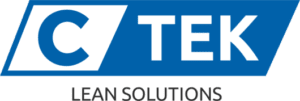Is Apple lean?
Lean companies are pegged as some of the most progressive and admirable in the business industry. Many world-renowned companies have adopted or even championed lean practices and ideology, including Toyota. One of the world’s most iconic brands is Apple. The company is certainly a leader in software and computer technology. However, many are still left wondering if it is ultimately a lean company.
Is Apple “Lean”?
Apple itself does not claim to be a lean company, and experts have not jumped to classify it as a Lean organization. However, many agree that even though the company may not identify as a Lean organization, it incorporates a number of lean philosophies into its thinking and culture.
What are Apple’s Lean Characteristics?
Apple’s foray into lean culture began with the launch of its first iPad. Since the release of its first product, the company has shown a commitment to reducing waste and focusing on providing a standout customer experience. Both of those principles are the foundational pillars of lean practices, and they are instrumental to a company’s success. While Apple may not have specifically had a lean approach in mind when it created the iPad, the company has nevertheless found a successful business model in abiding by lean practices.
Packaging
Product packaging is one area where Apple’s lean practices are put into production. The company strives to create minimal waste and maximum efficiency by using as little packaging as necessary for its products. The company’s goal is to produce small but still aesthetically pleasing packages that protect the product while reducing unnecessary material usage and ultimately waste. Apple’s packages also have a minimalist, clean, and clutter-free design that adds to their appeal. The fact that its packages are aesthetically pleasing is also an incentive, many customers find, to avoid throwing their packages away. Instead, they reuse them to store the original product when necessary or to store other electronic products.
The Apple Store
The first of Apple’s stores that opened was considered a mistake by critics due to the fact that it was so expensive. Gateway, which is one of Apple’s main competitors, also had expensive storefronts in 2001 when the company opened its doors for the first time. However, Gateway’s stores were too expensive for the company, and its stores were consequently forced to close their doors. In contrast to Gateway, however, Apple’s stores were a hit. They averaged over 5,000 visitors every week and produced $1.2 billion in revenue in 2004, which was a record for a retail store. Apple opened more stores following the success of its initial brick-and-mortar grand opening. Today, the company has over 300 stores nationwide to provide a superior and satisfactory customer experience.
Technology and User Experience
Ever dedicated to a good user experience, Apple has adapted some high-tech features into its products to make them safer and more appealing to customers. One new and effective practice that the company has adopted is fingerprint scanning. Starting with the iPhone 5, Apple has introduced a fingerprint scanning and recognition system into its phones. Customers can now unlock their phones more quickly and easily with Apple’s fingerprint scanning technology called Touch ID. All customers need to do is put their finger on the home button to unlock the phone, which makes it the fastest and most convenient way to access a smartphone to date. Customers can also access the iTunes Store online just with the press of a button, which improves efficiency and customer satisfaction, which are core concepts of lean. The end result is a win-win for the company, as it incorporates lean principles successfully into its business model and makes customers happy.
For more on Apple’s lean approaches, ask the knowledgeable staff at C Tek today.
